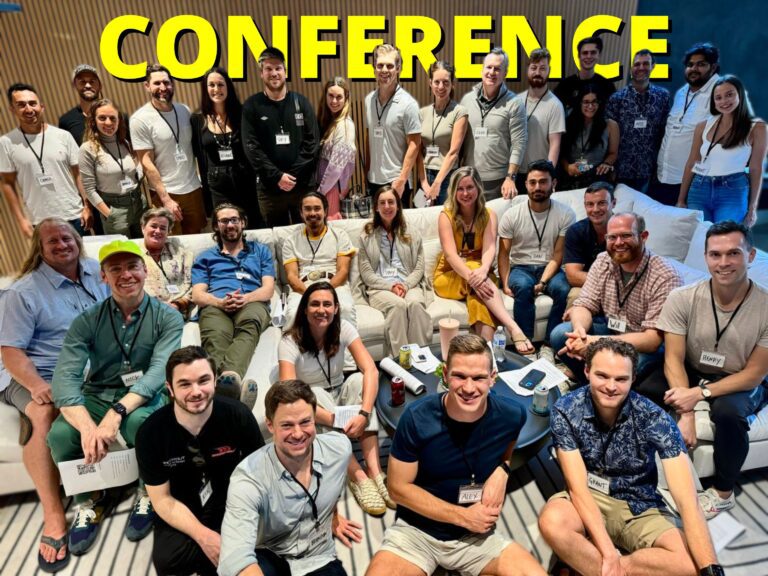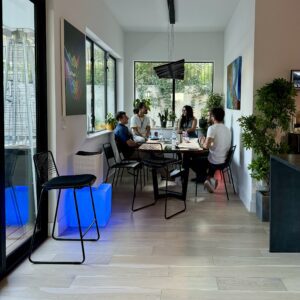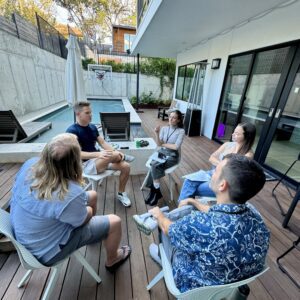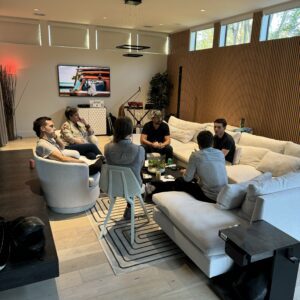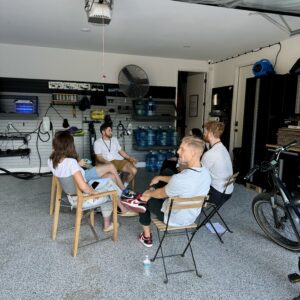Last updated: March 27, 2024
I’ve hosted hundreds of happy hours and networking events.
But now I want to experiment with bigger and deeper gatherings.
So I decided to host a mini-conference.
Mini-conference: 32 people gathering for 4 hours during a work day.
This is how I did it and everything I learned.
Why I Did This
I’ve recently become obsessed with conferences and trade shows.
What I like about conferences is the space and time to gather, learn new things, and meet a LOT of interesting people.
I was hired by four conferences last month:
- BiggerPockets aka BPCON23, for real estate investors
- FinCon23, for personal finance content creators
- HostCon, for short-term rental hosts
- Contrarian Thinking, an invite-only event hosted by my friend Codie Sanchez
All of these conferences hired me to help with training their staff, organizing icebreakers, improving their attendee networking, and act as a Master of Ceremonies.
Some day I think I might want to have my own big conference. Helping out with these other conferences has been good practice.
But I wanted even more practice. So I decided to start small and host my own a mini-conference.
I also called it a symposium, a salon, and an intellectual gathering. I guess you could call it anything you want.
This would be the first time that I:
- hosted a 4-hour event, as I’m known for 2-hour parties
- charged money for an event – but only $29,
- curated everyone into small group discussions, and
- hosted a daytime event starting at 1:30PM.
Overall, it seemed like a fun challenge. That’s why I did it.
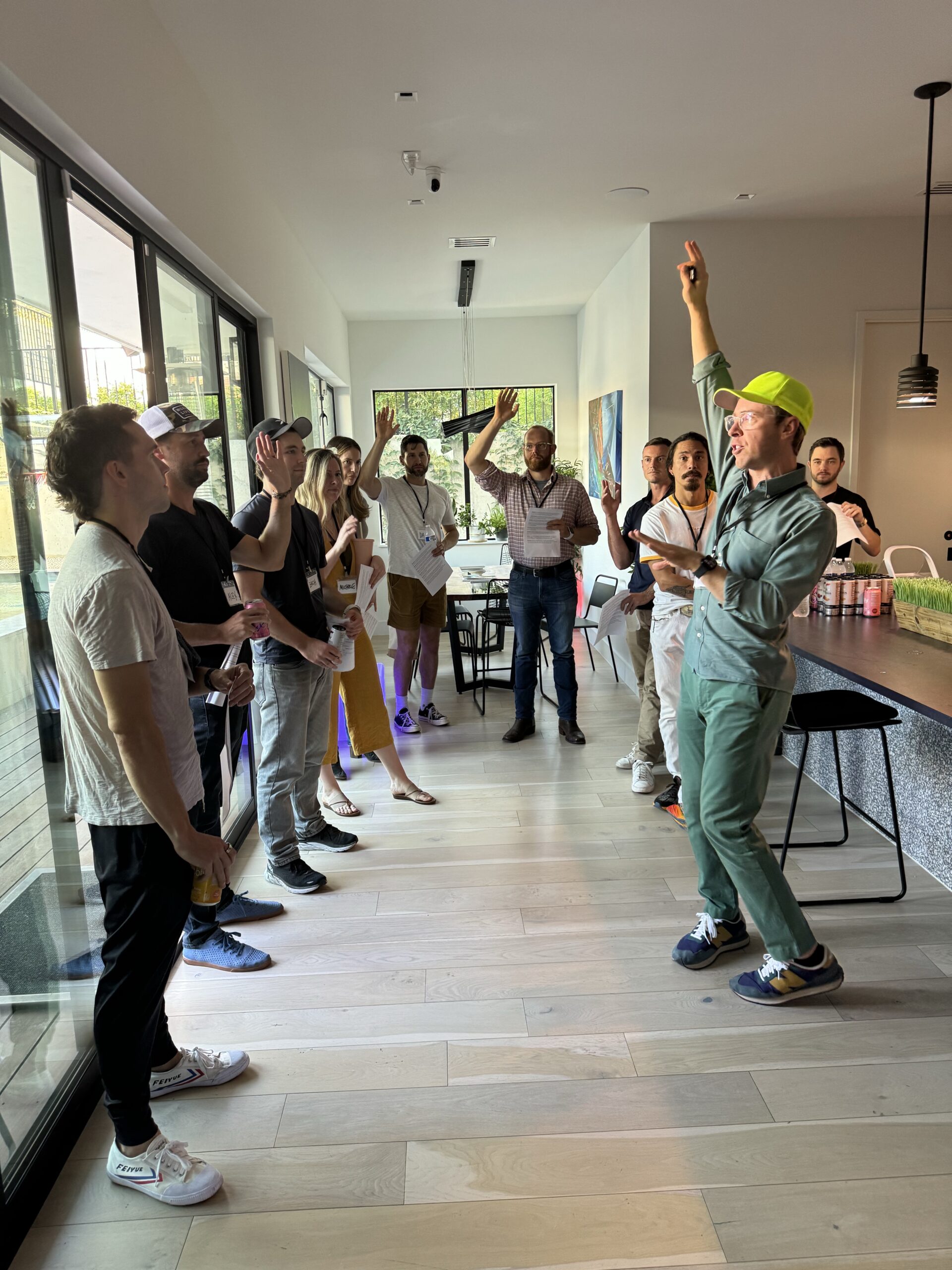
Who I Invited
I invited a handful of entrepreneurs in Austin, Texas to attend.
I also mentioned this event on my Friends Newsletter. Several people replied. I invited a few of them if I thought they’d get value from what I was doing.
I charged $29 per person and I sold all 25 tickets in 8 hours.
My situation is unique in that I was able to quickly sell out my first event.
This is because I’ve hosted hundreds of events. People have seen me host events before. Perhaps they assumed that I would run a good event again.
You have to host a lot of happy hours and meetups in order to build your reputation as an event host.
How I Invited People
I keep a large spreadsheet of people who have come to my past events. I also have a list of who I want to come to my future events.
I scanned the spreadsheet and selected 60 people who I thought would benefit from my gathering.
Then I sent them each an email a few weeks prior that said:
Hi FIRST NAME, do you want to come to my salon-style event on Nov 7th?
I promise it will be VERY AWESOME.
But it is from 1:30PM to 5:30PM so you will have to clear your schedule that whole afternoon.
Read about it and RSVP in this Google Doc:
LINK TO GOOGLE DOCI’ve met some fantastic people in Austin over the past year.
And I’ve hosted a lot of happy hour-style networking events.
But now I want to try something new, something deeper, to talk and discuss and learn from some of the most interesting people I’ve met.
There will be no keynote speakers and no boring panels.
Instead, we will have a lot of small group discussions.
The topics will be a mix of personal and professional….
Continued in the Google Doc here
LINK TO GOOGLE DOC
The Google Doc that I linked had a sample agenda and a bit more about what I was planning. Plus a link to buy a ticket.
Over the next two weeks, I invited more people that I met at various events. We ended with a total of 33 attendees.
The Venue / House
My friend Cody McLain offered to use his home for my event.
His house is centrally located in Austin. It is large and very nice. It was a big win to have this for my venue.
In exchange for hosting it at Cody’s home, I agreed to pay for cleaning before the event, after the event, and for his household staff’s time to set up and organize.
I also told Cody that I would split any profits 50-50… but we ended up with only $90 of profits, all of which I gave to Cody.
Areas of the House
We determined that we could have 5 or 6 areas in Cody’s home for small breakout groups:
- Kitchen table
- Living room
- Upstairs
- Outside patio
- Guest bedroom (empty)
The night before the event, I realized that we needed one extra space. So we added the garage as another breakout area.
Setting the Agenda
Creating an agenda was relatively easy. I knew it would be something like:
- Welcome & Orientation
- Introductions
- Small Group 1
- Small Group 2
- The End
Plus buffer time between each of those bullets.
That was easy.
But assigning people to small groups was the most difficult part.
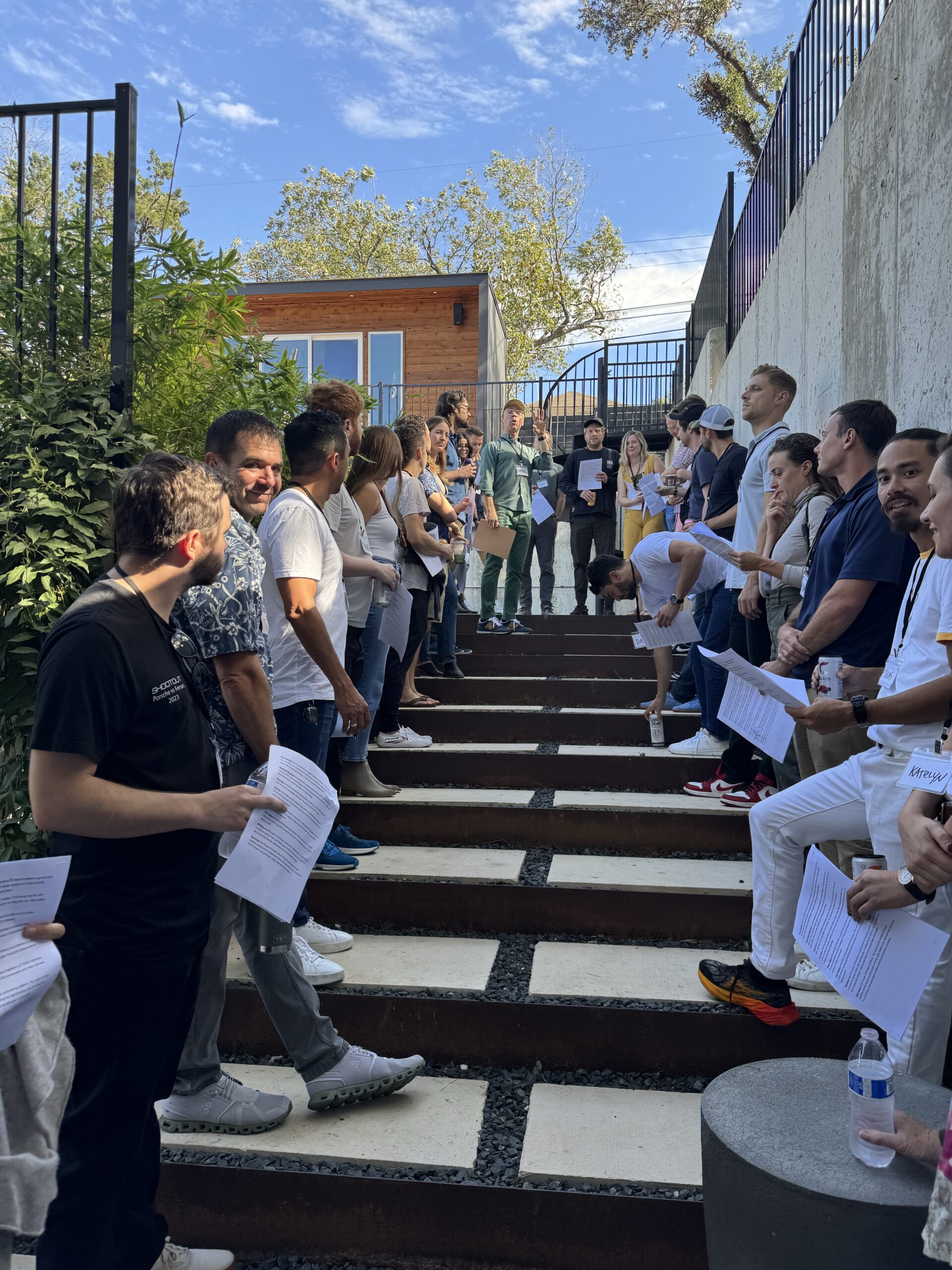
Small Group Assignments
I have a theory that how much people like events is directly correlated to how much time they get to talk and interact.
Small groups are one way to solve for this.
In a well-moderated small group discussion, everyone should get to talk more.
To assign people to small groups, I first created a database in Airtable of everyone who bought a ticket.
I did this by exporting a CSV of all my ticket buyers from Mixily. Most event platforms like Partiful and Eventbrite will let you export CSV files of your attendees.
Then I imported the names, emails, and phone numbers into a new Airtable thing.
Next, I manually tagged all of the guests with some topics I thought they might be interested in.
I did the tagging based on conversations I had with them or what I could glean on their social profiles and LinkedIn pages.
Those topic included:
- Parenting
- Startups
- Mental health
- Hiring
- Content creation
Once I tagged everyone, I sorted my list based on each of the topics to see if we could have four or five people to fill up the small groups.
Two groups I wanted to host, but didn’t have enough people for, were Real Estate and Podcasting.
The Final Agenda
Here’s the final agenda that was provided to all attendees:
1:30PM Welcome
Small Group Intros
Introduce yourself
Share a recent “win” that you’re proud of2:00PM Large Group Intros
Nick will read from Bios document
Add anything that he left out!2:20PM Break
2:40PM Breakout group 1
3:30PM Break
3:50PM Breakout group 2
4:40PM Break
5:00PM Group photo, then Mix and Mingle
5:30PM The end
You can see that only 40% of the 4 hour event was in small groups.
The rest of the time was taken up for introductions, icebreakers, and breaks.
Supplies
My events do not require many supplies.
I don’t do decorations and I serve minimal food.
Instead I focus on the guest list and conversations.
I spent about $200 on supplies for this mini-conference:
- Lanyards and badges — $40
- Stickers for the lanyards — $10
- 2 large cases of Seltzer Water — $18
- Sandwich platter — $40
- 2 trays of cookies — $20
- Many small bags of chips and nut bars — $20
- Other random drinks or snacks — $50
I made extensive use of my laser printer for this event. I could not have hosted this without easy access to a printer. I printed out and stapled three double-sided pages of information for everyone. This included their customized agenda, a QR code for feedback (more on that later), and a detailed list of everyone attending with guest bios.
Lessons Learned
The event was great but I’m obsessed with making it better. I’ve highlighted my own areas for improvement below and specifically pulled out constructive criticism from the Feedback Forms.
- Welcome team: Ask for 3 volunteers to show up 20 minutes early to help me welcome folks.
- I thought that the breaks would be the most popular part for the whole day. I found that the energy levels during this unstructured free time were incredible.
- But I think people who had amazing breakout sessions loved those breakouts more. And some of the introverts struggled with so much unstructured time.
- I want to help people exit conversations better during the unstructured time, so I’ll think on that a bit.
- More moderator training: I need to give my moderators more advance notice (sorry!) and provide them with a bit of training. Ask them to arrive 30 minutes early for said training and do demonstrations of how to cut people off, pacing, question-asking, etc.
- Next time, I’ll work a bit more on the discussion topics. Such as sending a survey to allow people to vote on topics they are interested in. For example, I could have had the topics more detailed or clear or I could have provided some questions to attendees to start thinking about he topics before they arrived.
- Figure out a way to incorporate Hobbies as part of the Introductions when the event is primarily for local attendees.
- Have distinct or separate breakout areas where there is no sound overlap from other groups.
- I’d like the individual introductions in the breakout groups to be a minimum of 2 minutes for each person. To allow everyone to explain a bit more about what they are working on or what’s on their minds. I will note that or set the expectation next time.
Feedback Forms
I created a QR code linked to a Google Form that was printed on everyone’s agenda.
At the end of the event, before we did a group photo, I made everyone take out their phone, scan the QR code, and fill out the feedback form.
Doing this in real-time during my event is the best way that I have found to get the most amount of feedback.
Here are the questions that I asked on the Feedback Form:
- How likely are you to recommend this event to a friend or colleague?
This was scaled on a 1 to 10 rating, with 1 = Not Likely and 10 = Very Likely. - What was your favorite part?
- What was your LEAST favorite part?
- How to make it better next time?
There was also an optional form field to add their name.
Guest Feedback
The feedback was pretty good!
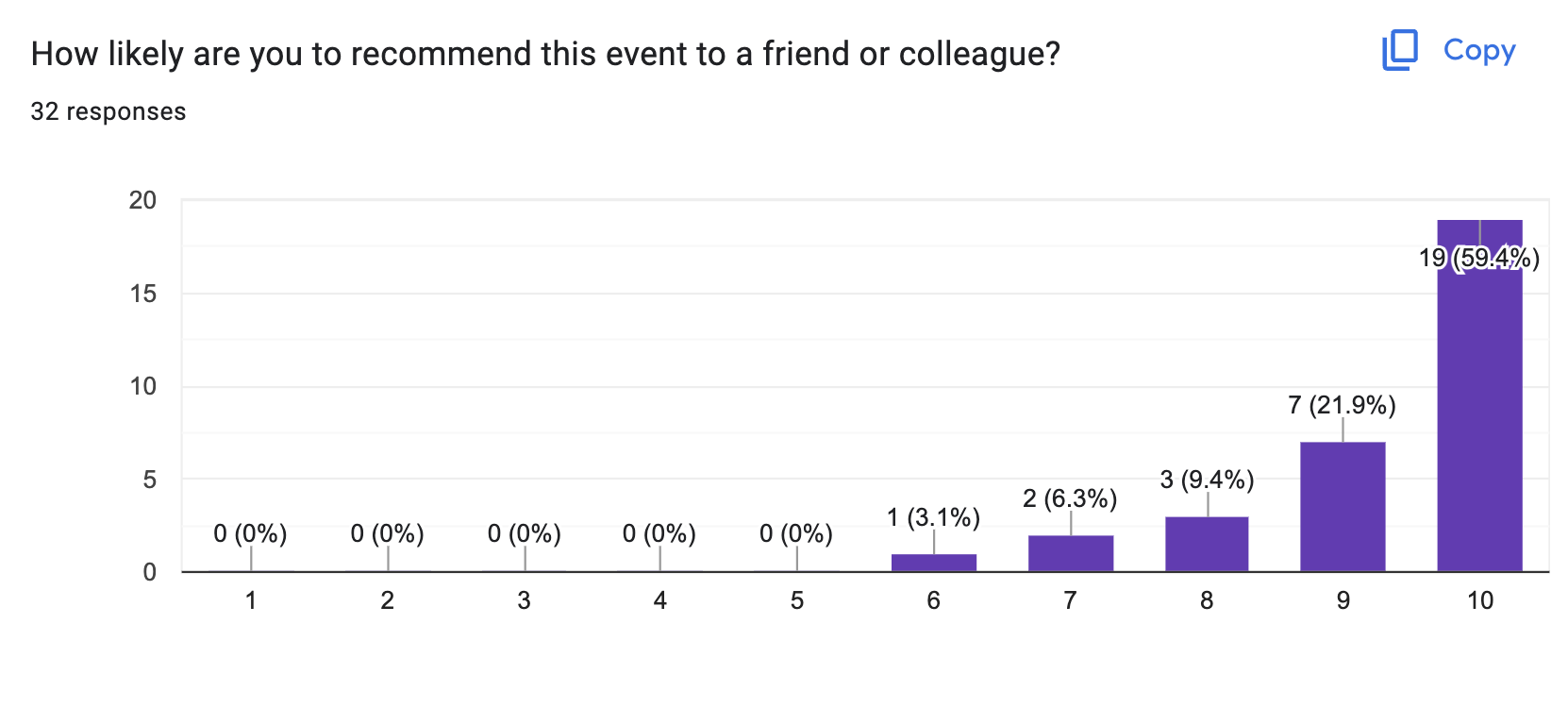
Here are some of the constructive criticisms, notes, and comments that people sent.
- Felt like overall there were too many people, little overwhelming
- Favorite part was reading all the bios with everyone there
- Wanted an easier way to add people on socials- consider adding QR codes to the Bios for each since you already had their links
- From a moderator: It was a bit hard to find flow in each of the breakout groups. Sometimes nerve wracking but eventually leads to magic.
- Loved the breakout groups
- It was great to meet so many new people. Good level of depth and breadth of a big group, but not too big. Enough down time and enough deep time.
- Next time: Slightly better curated breakouts with interests.
- Think it was very very good and exceeded my high expectations and I’ll get a lot out of it long term
- Provide more icebreakers for breakout groups where the people don’t have a lot in common. Or list of common questions.
- Love small groups. More intimate. Maybe guide the small groups? What is the goal for them to discuss? Oh! Maybe a round where people can choose their room. Maybe I was in start ups but wanted to try ecommerce
- With us reading the intros in a group, having access to the intros the day before, I found the intro portion in breakouts to be a bit redundant. The energy in my group had died by the second session.
- Maybe next time you could try small mini lectures aka 5 min TED talks on interesting topics. Such as: How to land a VA, How to set boundaries at work, How I became a lecturer… etc
- Try to make sure people in each breakout group aren’t overlapping. (Nick’s note; this is incredibly hard but I’ll work on it!)
- One of my favorite parts was simply meeting a bunch of interesting people who are free or have flexible schedules on a Tuesday at 1:30PM.
- Next time it would be neat to give us some input on the breakout session topics or ability to choose which session to attend. But overall it was epic and I’d definitely recommend it to others.
- Man, it was pretty awesome! The people were great! I liked that everyone here was someone who was curious and in control of their life more than a normal person.
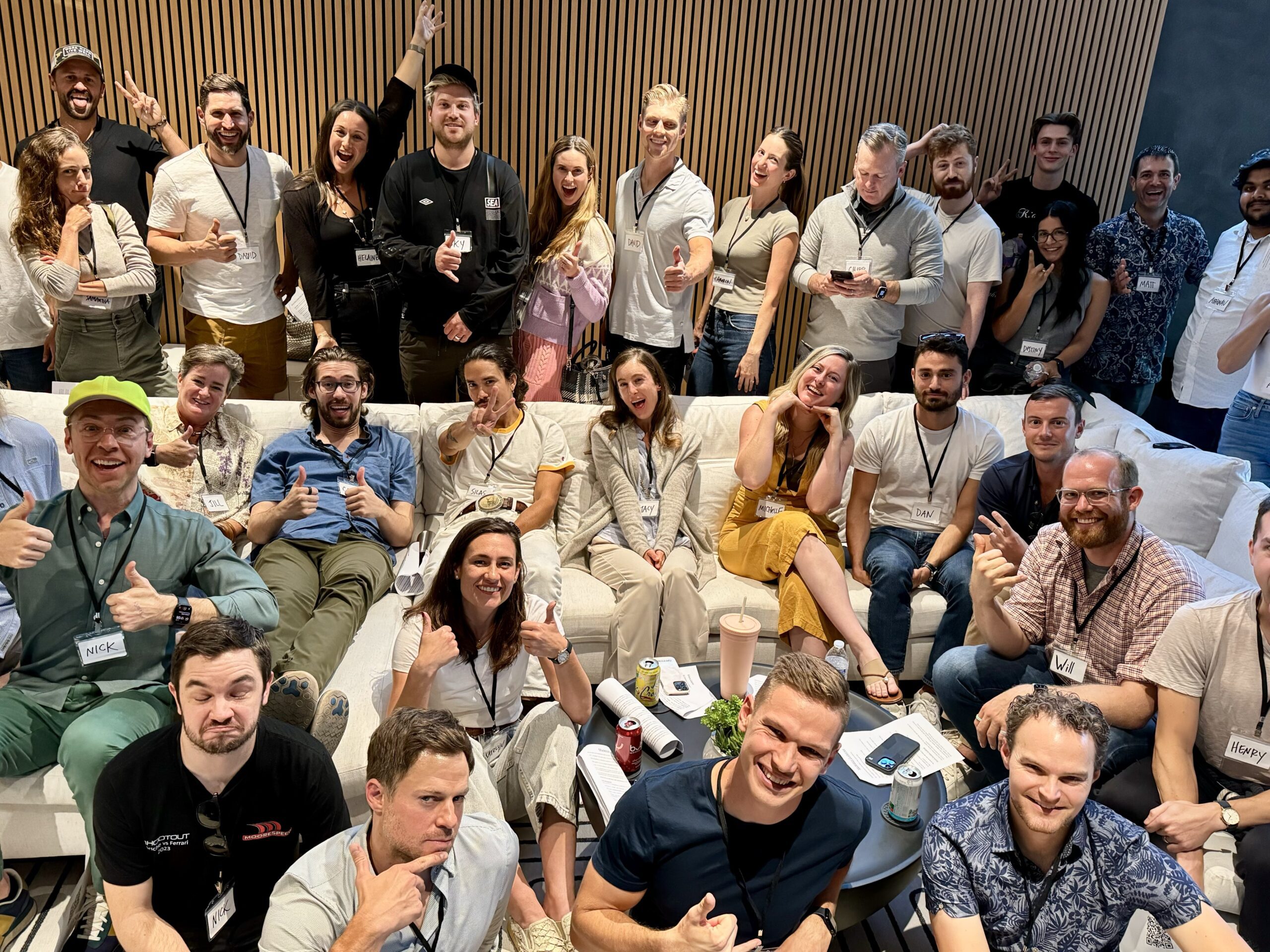
Conclusion
When I was driving to the event, I had a sense of calm and relaxation. I had done so much work and preparation the days prior that all of the hard work was already done.
This was a fantastic event and people seemed to enjoy it.
My next event test will be on Nov 30th, 2023. It will be a full day event.
I’ll probably do a smaller group and attempt to curate it with some of my closer friends or creators. I’m still thinking about what to do.
I plan to continue hosting curated happy hours. I’ll try integrating small group discussions into those events. It’ll use many of my rules from The 2-Hour Cocktail Party.
I believe that people want and desire in-person interactions. It is fun to experiment and bring people together.
I’ll keep prototyping and report back what I learn!
To be notified of my next events, sign up for my Friends Newsletter.

